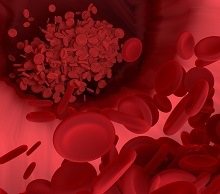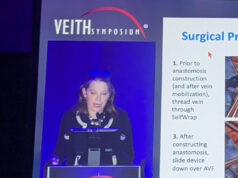 Far infrared radiation (FIR) has demonstrated no haemodynamic changes in the arteriovenous fistulas (AVFs) of haemodialysis patients, despite prior contradicting research. This is the key finding of a study published in the Journal of Vascular Access by Emilie K Hansen (Herlev Hospital, Herlev, Denmark) and colleagues.
Far infrared radiation (FIR) has demonstrated no haemodynamic changes in the arteriovenous fistulas (AVFs) of haemodialysis patients, despite prior contradicting research. This is the key finding of a study published in the Journal of Vascular Access by Emilie K Hansen (Herlev Hospital, Herlev, Denmark) and colleagues.
For haemodialysis patients, the AVF is the standard, preferred vascular access, and past studies have indicated that FIR increases access flow, with an enhanced maturation and patency of the fistula, the researchers detail. The acute effects of FIR, if any, have been sparsely described and appear contradictory, however, and as such Hansen and colleagues set out to investigate haemodynamic changes of AVFs during FIR in haemodialysis patients.
This trial was a sub-study of “FAITH ON FISTULA”, which is a larger, multicentre randomised controlled trial examining maturation and survival rates of AVFs after one year of far infrared treatment. Therefore, patients enrolled in FAITH ON FISTULA at Herlev Hospital were invited to take part in this sub-study between 26 August and 28 October 2020. A total of 20 patients with an AVF were enrolled, all above 18 years of age and receiving haemodialysis. Patients with both an AVF and a central venous catheter (CVC) were excluded.
The patients were randomly assigned to either receive FIR (FIR group) or no FIR (control group). Baseline characteristics including age, gender, ethnicity, body mass index (BMI), cause of kidney failure, diuresis, cannulation technique, haemodialysis vintage, intervention on the AVF, comorbidity, medicine, and the type and duration of the AVF, were all collected from patients. Weight, dry weight, anticoagulation, blood flow rate and ultrafiltration volume during the 40 minutes of measurements were also registered on the study day.
The primary study outcome was the acute change in access flow during a 40-minute session of FIR compared to the control group, the authors detail. Secondary outcomes were acute changes in haemodynamic parameters, biochemistry and skin temperature during the single FIR session. Additionally, changes in blood pressure and ultrafiltration were associated to the changes in access flow, and cardiac output was explored as well. On the second day of dialysis within the week, and during the first hour and a half, acute changes in access flow were investigated, as well as concomitant changes in haemodynamic parameters of importance for access flow.
The results revealed no significant change in access flow within the FIR group when compared to the control group (-10ml/min vs. -17.5ml/min, p=0.58). Furthermore, there were no significant differences in the haemodynamic parameters between the FIR and control group; including cardiac output (-0.7ml/min vs. -0.4ml/min, p=0.58), cardiac index (-0.3 [-0.5; -0.1] l/min/m2 vs. -0.3 [-0.4; 0] l/min/m2, p=0.68), mean arterial pressure (5.5 [-1.8; 8.4] mmHg vs. 1.5 [-3; 6.3] mmHg, p=0.35) and total peripheral resistance (2 [1.8; 3.4] mmHg×min/l vs. 1 (-0.3; 3.1) mmHg×min/l, p=0.12).
The study’s authors therefore conclude that, in spite of prior, contradicting research, one session of FIR in haemodialysis patients did not result in acute changes in access flow—and this was not due to differences in the haemodynamic parameters between the two study groups.











